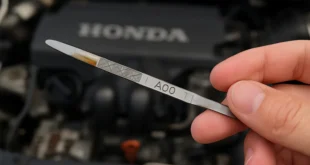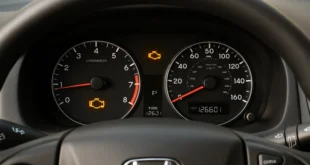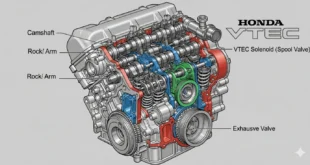Are you a proud Honda owner looking to take your driving experience to the next level? Whether you cruise in a Civic, command an Accord, or explore in a CR-V, there’s a world of Honda performance upgrades waiting to unleash your vehicle’s true potential.
From subtle tweaks to significant overhauls, enhancing your Honda’s capabilities can transform it into a more responsive, powerful, and exhilarating machine.
This comprehensive guide will delve into various performance upgrades, helping you understand what’s available, how they work, and what might be the best fit for your Honda and your driving style.
Honda vehicles are renowned for their reliability, fuel efficiency, and engaging driving dynamics right off the factory floor. However, their robust engineering also makes them excellent candidates for performance modifications. The aftermarket industry for Honda cars is vast and vibrant, offering a plethora of options for enthusiasts eager to extract more horsepower, improve handling, or simply personalize their ride. But with so many choices, where do you begin? This article aims to demystify the process, providing you with the knowledge to make informed decisions about upgrading your Honda.
We’ll cover everything from fundamental engine enhancements that boost power and torque, to suspension and braking improvements that sharpen handling and ensure safety. We’ll also touch upon exhaust systems that not only improve performance but also give your Honda a more aggressive sound, and intake systems that help your engine breathe easier. Whether you’re a seasoned gearhead or a curious newcomer to the world of car modifications, this guide will serve as your roadmap to unlocking your Honda’s hidden power and transforming it into the vehicle you’ve always dreamed of.
Engine Performance Upgrades: The Heart of the Beast
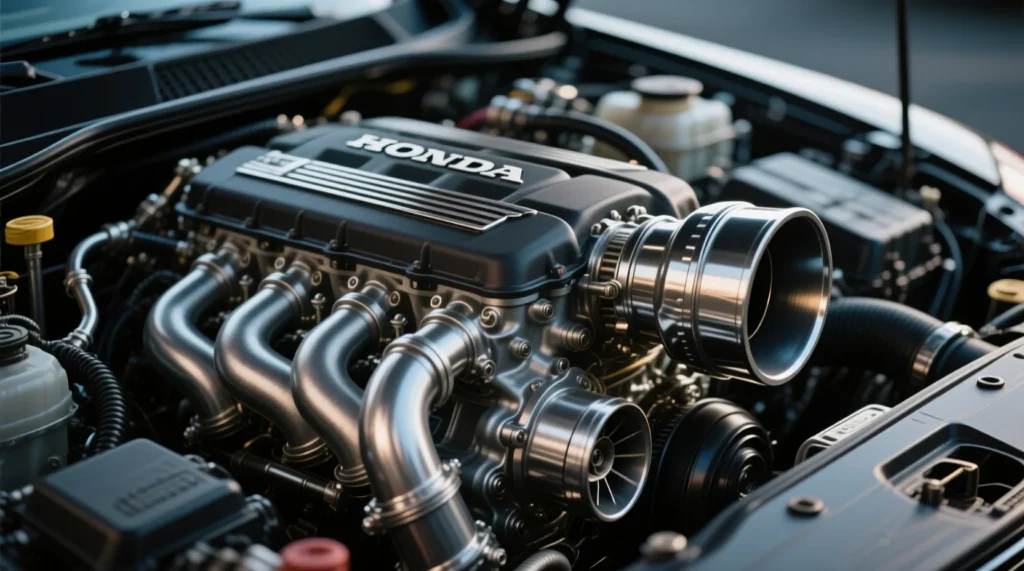
The engine is the heart of your Honda, and naturally, many performance upgrades focus on enhancing its output. These modifications can range from simple bolt-ons to complex internal changes, each offering different levels of power gains and requiring varying degrees of technical expertise.
Intake Systems: Letting Your Engine Breathe
One of the most common and often first modifications Honda owners consider is an upgraded intake system. The factory intake is designed for quiet operation and efficiency, but it can restrict airflow to the engine.
Aftermarket cold air intake (CAI) systems or short ram intakes are designed to provide a less restrictive path for air, often drawing cooler, denser air from outside the engine bay. Cooler air contains more oxygen, leading to more efficient combustion and, consequently, more power.
- Cold Air Intakes (CAI): These systems typically relocate the air filter to a cooler area, often within the fender well, away from engine heat. This ensures the engine receives the coolest possible air, maximizing power gains. While effective, installation can be more involved, and they might be susceptible to hydro-locking in heavy rain if not properly installed.
- Short Ram Intakes: These are simpler and shorter, placing the air filter within the engine bay. They are easier to install and generally less expensive than CAIs. However, they may draw warmer air, leading to slightly smaller power gains compared to CAIs.
Both types of intake systems often come with high-flow, reusable air filters that further improve airflow. The audible difference, a more aggressive engine note, is also a popular benefit for many enthusiasts.
Exhaust Systems: Unleashing the Roar
Just as important as getting air into the engine is getting exhaust gases out efficiently. The factory exhaust system is designed to be quiet and meet emissions regulations, which can often restrict exhaust flow. Upgrading your exhaust system can reduce back pressure, allowing the engine to expel gases more freely, leading to increased horsepower and torque.
Exhaust upgrades typically involve several components:
- Headers/Exhaust Manifold: These are the first part of the exhaust system, connecting directly to the engine’s cylinder head. Aftermarket headers are designed with smoother, wider pipes to improve exhaust scavenging, which helps pull exhaust gases out of the cylinders more effectively.
- Downpipe (for turbocharged engines): In turbocharged Hondas, the downpipe connects the turbocharger to the rest of the exhaust system. An upgraded, larger diameter downpipe can significantly reduce back pressure from the turbo, allowing it to spool faster and produce more power.
- Mid-Pipe/B-Pipe: This section connects the downpipe (or headers) to the muffler. Upgraded mid-pipes often have a larger diameter and fewer bends, further improving exhaust flow.
- Muffler/Axle-Back Exhaust: The muffler is responsible for reducing exhaust noise. Aftermarket mufflers are designed to be less restrictive, offering performance gains along with a more aggressive exhaust note. Axle-back systems replace only the muffler and the piping from the rear axle backward, providing a change in sound and a minor performance boost.
- Cat-Back Exhaust: This system replaces everything from the catalytic converter backward. It offers more significant performance gains and a more pronounced change in exhaust sound compared to axle-back systems.
When choosing an exhaust system, consider your local noise regulations and your personal preference for sound. Some systems can be quite loud, while others offer a more subtle, refined tone.
Engine Tuning: Optimizing Performance Electronically
While intake and exhaust upgrades improve airflow, engine tuning (or
remapping) is crucial for maximizing the benefits of these hardware modifications. Modern Honda engines are controlled by a sophisticated Engine Control Unit (ECU) that manages fuel delivery, ignition timing, and other parameters. Factory ECUs are programmed for reliability, emissions compliance, and fuel economy, not necessarily for peak performance.
Engine tuning involves modifying the ECU’s software to optimize these parameters for increased power and torque. This can be done through:
- ECU Flashing/Reflashing: This involves directly reprogramming the ECU with new software. This is often done by professional tuners or using specialized tuning devices. A good custom tune can significantly improve power output, throttle response, and overall drivability, especially after installing other performance parts.
- Piggyback Modules: These are external modules that connect to the ECU and modify its signals before they reach the engine. They don’t directly reprogram the ECU but rather intercept and alter sensor readings to trick the ECU into delivering more power. Piggyback modules are generally less aggressive than full ECU flashes but can be a good option for those who want reversible modifications or prefer not to tamper directly with the ECU.
When considering engine tuning, it’s vital to choose a reputable tuner or a well-regarded tuning solution. A bad tune can lead to engine damage, reduced reliability, and poor fuel economy. Always ensure the tune is specifically designed for your Honda model and its modifications.
Forced Induction: Turbocharging and Supercharging
For those seeking significant power gains, forced induction is the ultimate Honda upgrade. This involves adding a turbocharger or supercharger to your engine, which forces more air into the cylinders than the engine can naturally draw in. More air means more fuel can be burned, resulting in a substantial increase in horsepower and torque.
- Turbocharging: Turbochargers use exhaust gases to spin a turbine, which in turn spins a compressor that forces air into the engine. They offer excellent power gains and can be very efficient, but they can also introduce
turbo lag (a delay in power delivery) and generate a lot of heat.
– Supercharging: Superchargers are belt-driven directly by the engine, providing instant boost with no turbo lag. While they generally produce less peak power than turbochargers, their linear power delivery can be very satisfying for street driving.
Forced induction kits are complex and expensive, requiring significant modifications to the engine and supporting systems (fuel, cooling, etc.). This is typically an upgrade for serious enthusiasts seeking maximum power and should be installed by experienced professionals.
Suspension and Handling Upgrades: Cornering with Confidence
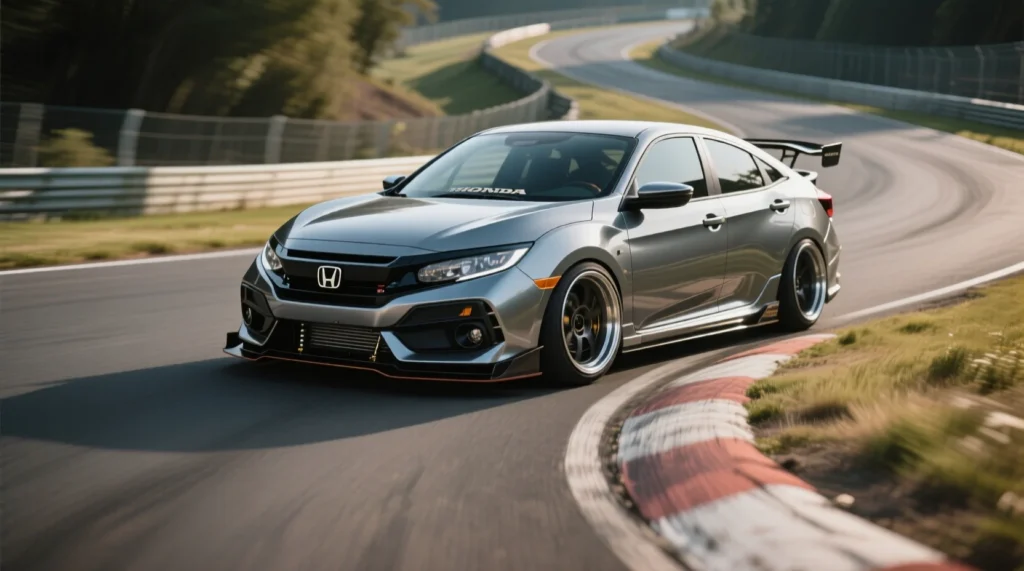
Once you have more power, you’ll want to ensure your Honda can handle it. Suspension and handling upgrades improve your car’s cornering ability, stability, and overall driving feel. These modifications can make your Honda feel more planted, responsive, and enjoyable to drive, especially on winding roads or at higher speeds.
Coilovers and Lowering Springs: Getting Closer to the Road
One of the most popular suspension modifications is lowering your car. This can be achieved with lowering springs or coilovers.
- Lowering Springs: These are stiffer and shorter springs that replace your factory springs, lowering the car’s ride height. This reduces the car’s center of gravity, which can improve handling and reduce body roll during cornering. Lowering springs are a relatively inexpensive way to improve aesthetics and handling, but they must be matched with compatible shocks to avoid premature wear.
- Coilovers: Coilovers are a more comprehensive solution, replacing both the spring and the shock absorber with a single, integrated unit. They offer adjustable ride height, and often adjustable damping (the stiffness of the shock absorber). This allows for fine-tuning of the suspension to suit different driving conditions or personal preferences. Coilovers provide superior handling performance and adjustability compared to lowering springs, but they are also a more significant investment.
When choosing between lowering springs and coilovers, consider your budget, desired level of adjustability, and how you plan to use your Honda. For track use or serious performance driving, coilovers are generally preferred.
Sway Bars: Reducing Body Roll
Sway bars (also known as anti-roll bars) are designed to reduce body roll during cornering. They connect the suspension on opposite sides of the car and resist the tendency of the car to lean. Upgraded, stiffer sway bars can significantly improve your Honda’s cornering stability and responsiveness, making it feel more agile and predictable.
Bushings: Tightening Up the Feel
Factory suspension bushings are often made of soft rubber to prioritize comfort. Replacing these with stiffer polyurethane or spherical bearings can significantly reduce suspension deflection, leading to a more direct and responsive feel. While this can increase road noise and harshness, it provides a noticeable improvement in handling precision.
Honda Braking System Upgrades: Stopping Power When You Need It
With increased power and improved handling, upgrading your braking system becomes essential for safety and performance. Enhanced brakes provide shorter stopping distances, better fade resistance during aggressive driving, and a more confident pedal feel.
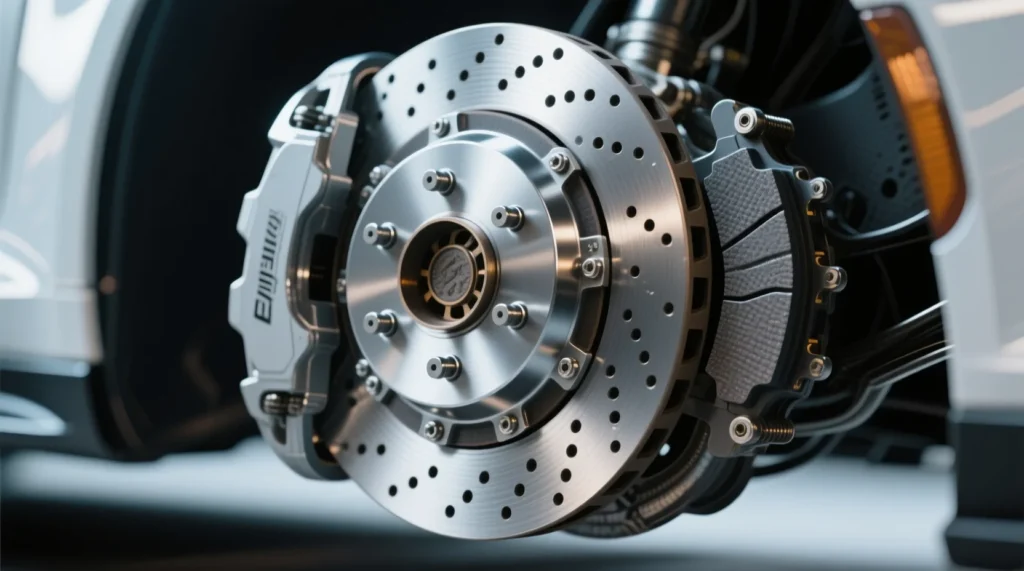
Performance Brake Pads and Rotors: A Simple Upgrade
One of the easiest and most effective braking upgrades is to replace your factory brake pads and rotors with performance-oriented alternatives.
- Performance Brake Pads: These pads are made from compounds designed to withstand higher temperatures and provide more friction, resulting in better stopping power and reduced fade. There are various compounds available, from street-performance pads to full-race pads, each with different characteristics regarding noise, dust, and cold bite.
- Slotted or Drilled Rotors: While factory rotors are typically solid, aftermarket performance rotors often feature slots or drilled holes. These designs help dissipate heat, vent gasses, and clean the pad surface, leading to more consistent braking performance and reduced fade. However, drilled rotors can be prone to cracking under extreme conditions, so slotted rotors are often preferred for street and light track use.
Big Brake Kits (BBK): The Ultimate Stopping Power
For the ultimate in braking performance, a big brake kit (BBK) is the way to go. A BBK typically includes larger calipers with more pistons, larger diameter rotors, and stainless steel brake lines. These kits provide a massive increase in stopping power, heat capacity, and pedal feel, making them ideal for track use or highly modified street cars.
Conclusion: Your Honda, Your Way
Upgrading your Honda is a journey of personalization and performance enhancement. Whether you’re aiming for a subtle improvement in daily driving or a full-blown track monster, the aftermarket offers a wealth of options to help you achieve your goals. Remember to research thoroughly, choose reputable brands and installers, and prioritize safety. By understanding the various Honda performance upgrades available and how they impact your vehicle, you can unlock your Honda’s hidden power and truly make it your own. Happy modifying!
